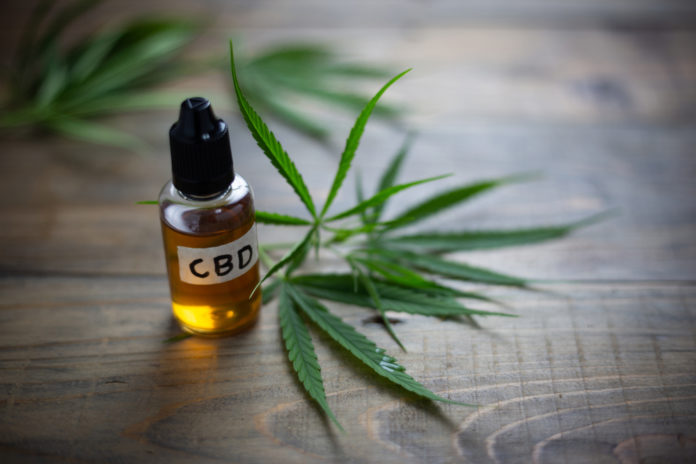According to New Frontier Data, the U.S. CBD market is expected to grow to $1.9 billion in consumer sales by 2020, split almost evenly between hemp-based, marijuana-based, and pharmaceutical products. However, while CBD is an on-fire sector, it also remains one of the more difficult to navigate due to a lack of consumer education, ambiguous laws, and unfounded hyperbole. Budtenders and retail employees must possess extensive knowledge about CBD’s effects and efficacy, how the substance compares to THC and interacts with it, and much more.
Stocking the shelves
Sarah Mascara, manager of Los Angeles co-op The Syndicate, said quality is her first consideration when deciding which CBD brands to offer. She recommends carrying a broad selection of CBD-to-THC ratios. “Something for everyone is my motto,” she said, “but the most important thing is for products to [convey] a clear understanding of dosing and ingredients.”
CBD-related products compose a whopping 40 percent of The Syndicate’s total sales. Mascara takes care to ensure the shop offers something for almost everyone. “I like to carry the Select tincture for customers who prefer only CBD,” she said. “But I like the brands Care by Design and CBD Alive for their various ratios and many specific options and sizes.”
In the past year, CBD packaging has become increasingly important. Mascara looks for brands that are packaged simply, bear proper labeling, and provide clear instructions. “People don’t want to look at something that looks intimidating, and they need to understand what the product is without having to stare for too long,” she said.
Price is a key to sales success, too. Mascara won’t carry a brand she feels is not affordable. In addition, she likes to “look at the product and really see if the milligrams are worth the price for the customer purchasing it.”
On an average day, The Syndicate serves at least twenty customers asking for only CBD, up substantially from 2017. In fact, most don’t even know what CBD is when they inquire. “For the most part, they just heard about it,” said Mascara.
Making the sale
Although consumer knowledge about CBD is growing, expect to spend significant time answering questions before making a sale. According to Mascara, when customers inquire about CBD, she first asks if they’ve used any kind of cannabis before. Next, she asks what effect they wish to achieve. “When I get those answers, I run through the different ways to take [CBD],” she said. “I like to get to know the person and match the product based on their lifestyle or their tolerance. Some people work in an office and need vape pens for quick dosing, while others are using it for heavy pain and such, where I would offer a tincture.”
When it comes to interest in CBD, Millennials are the number one consumer, but Baby Boomers and senior citizens rapidly are becoming a significant demographic, Mascara noted. Many senior citizens visit the shop based on a recommendation from their kids or grandkids, she added.
“Older people talk about CBD as if they kind of know about it and want to learn more,” Mascara said. “The truth is everybody just needs proper education.
“My budtenders are always confident and happy to educate and to make sure people are using CBD properly,” she said. “When customers come back talking about how what they are using works and how great they feel, it all just makes it so worthwhile and reminds us why we do what we do each day.”
3 CBD Retail Musts
- Know the source. Full-spectrum CBD oil derived from industrial hemp is one of the hottest commodities on the market, but not all products are created equal. “Know where your hemp is coming from,” advised Bo Becker, vice president of marketing for CW Hemp. “Know where the fields are; know the soil health and what’s put on the plant.”
- Product placement. Bear in mind CBD products compose their own category. Merchandise them on an endcap or a side wing to an endcap, create an island, or set up a stand-alone cabinet.
- Education, education, education. Make sure all employees know CBD inside-out. It might even make sense to have a dedicated CBD specialist on site. “I think we’ve had such success selling CBD because the staff is well trained,” said Mascara.













